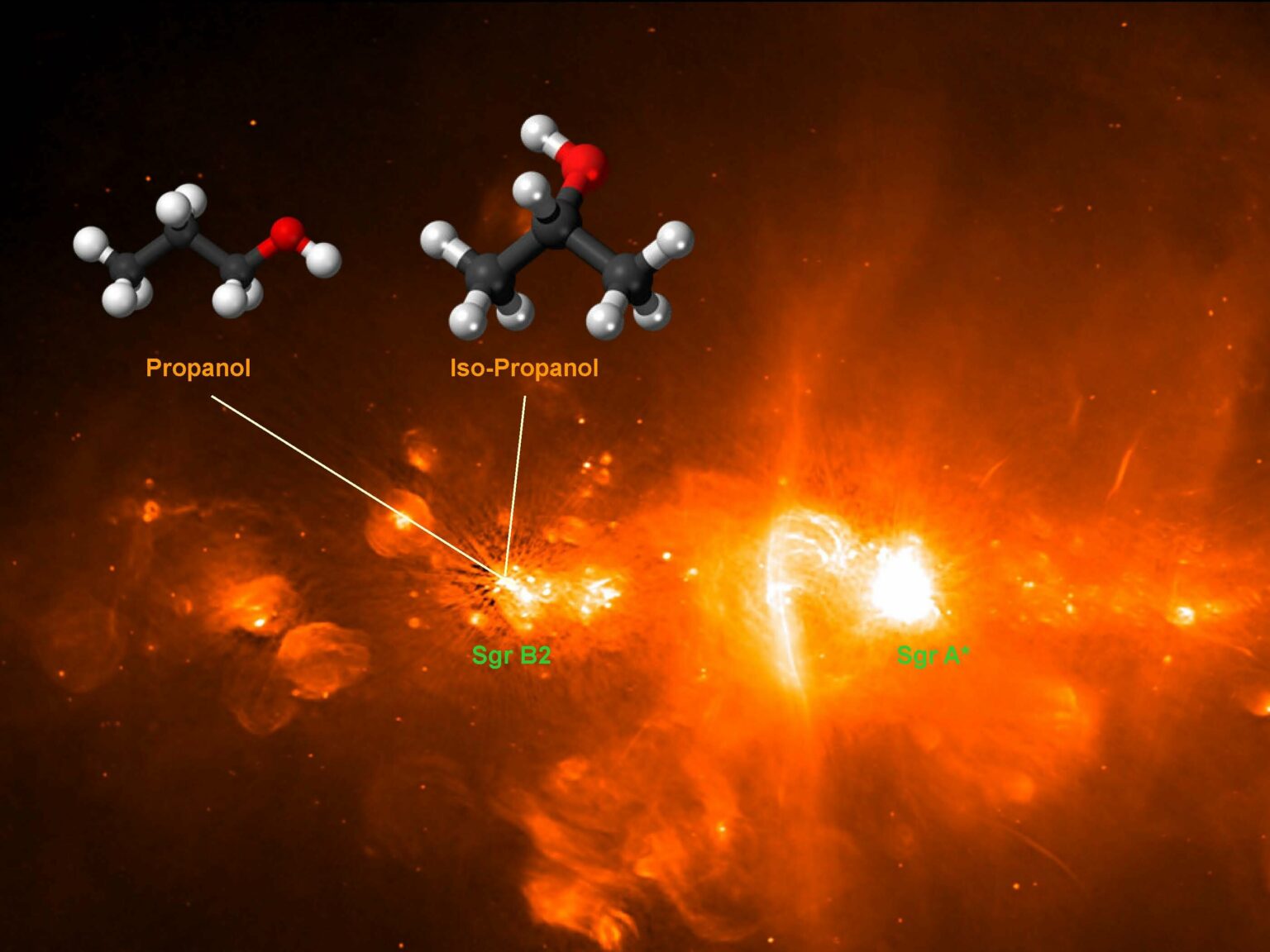Isopropanol molecules have been found in the Sagittarius B2 region, located near the center of the Milky Way. This alcohol is used on Earth as a sanitizer. The study was carried out using an array of ALMA antennas.

An alcohol sanitizer was found in space
A group of scientists working with the ALMA array of radio telescopes located in Chile reported that they found a substance near the center of the Galaxy that had not been found in space before. We are talking about isopropanol. On Earth, this alcohol is mainly used as a sanitizer.
The substance was discovered in the giant interstellar cloud Sagittarius B2. It is known primarily as a source of radio emission, which is located near the supermassive black hole Sagittarius A*. This region is located at a distance of about 400 light-years from the center of the Milky Way and is a “star cradle” in which giant luminaries are born.
Alcohols are one of the most common classes of substances in the Universe. But until now, scientists have mainly found those with few atoms in their molecules. Propanol and its isomer isopropanol, found in the Sagittarius B2 cloud, are the heaviest of them.
ALMA continues to discover organic molecules
To date, 276 different organic substances have already been discovered in space. These studies are extremely important for our understanding of how life arises on planets. There is evidence that the first stages of the synthesis of the living from the inanimate take place directly in space. To do this, scientists study the emission and absorption spectra of a variety of objects.
This work is quite difficult. So, a group of scientists who discovered a sanitizer near the center of the Milky Way has been looking for such molecules from Sagittarius B2 for 30 years. From the very beginning of their work, they discovered a lot of simple organic substances in this cloud, but then their discovery was suspended due to the low sensitivity of the single-mirror telescopes with which they worked.
However, in 2014, the ALMA radio antenna array, located in Chile, began its work. Its high angular resolution made it possible to identify several rather complex organic substances. In just a few years, scientists were able to identify iso-propyl cyanide, N-methylformamide and urea.
According to phys.org
Follow us on Twitter to get the most interesting space news in time
https://twitter.com/ust_magazine

